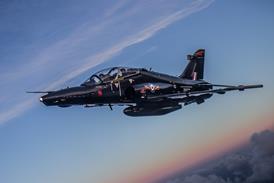Star Alliance partners Lufthansa and United Airlines have finally committed to a deal that will see technology provider Amadeus develop a common IT platform for the two airlines.
The two Star carriers will use the Amadeus Altea suite to form a platform covering reservations systems, pricing calculations, ticketing, flight schedules and availability, customer databases, inventory, revenue management, departure control, passenger check in and rebooking.
The project has been a long time in the making, and is a major coup for Amadeus, which has been making a push for the broader airline IT market so as not to rely too heavily on its traditional global distribution system (GDS) business. The involvement of United, the second largest carrier in North America, will vastly boost market share in the region for Amadeus, which is currently at around 10%.
The request for information for the project was issued in early 2003, and Amadeus has been in exclusive negotiations with the Star carriers since early 2004. “The Star Alliance common IT platform represents the realisation of a long-time strategic goal, driven by the effort to better serve the customer, significantly lower IT costs and dramatically increase the speed of delivering new products to market,” says Jaan Albrecht, the alliance’s chief executive.
The biggest hiccup along the way was Air Canada’s sudden decision in December last year not to join Lufthansa and United in the first wave of carriers. “I thought we had that deal closed,” says Hans Jorgensen, vice-president, strategic airline and partner programmes at Amadeus, adding that he understands the reason for the move, given the tough conditions Air Canada was facing in its domestic market at the time. The fact that both United and Air Canada were battling for financial survival was one of the reasons it took so long to sign a deal.
With the contracts with Star’s two largest carriers now signed, Amadeus is embarking on talks with other alliance members. “This is the end of the beginning,” says Jorgensen, adding the Madrid-based company wanted to get Lufthansa and United firmly on board so that it could go to other Star carriers with a strong case.
“You have to have a value proposition that makes sense,” he says. It is likely that Star Alliance projects will increasingly be geared towards the common platform, providing a strong incentive for carriers to sign up. Peter von Moltke, senior vice-president of the Amadeus airline business group in North America, says: “The business case for joining is just so significant that it would not make sense for an alliance member to retain its own independent systems.” He adds: “Seamlessness will be a reality for alliances only once the allies share a common platform.”
The Amadeus deal has a 15-year duration and although there is no firm figure on costs, Amadeus alone has spent 400 man-years on the project over a five-year period already.
Lufthansa will start migrating some functions over to the new system in the second half of 2006, and expects to complete the process by the end of 2007. There is no firm date for United’s migration, but the plan is for United’s inventory and reservations systems to move over in early 2008, with departure control migrating to the Amadeus platform later that year.
Jorgensen says that United want to move over “as quickly as possible” as costs begin to mount up on its creaking legacy Apollo system.
COLIN BAKER/LONDON AND DAVID FIELD/WASHINGTON
Source: Airline Business























